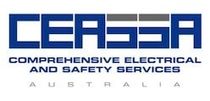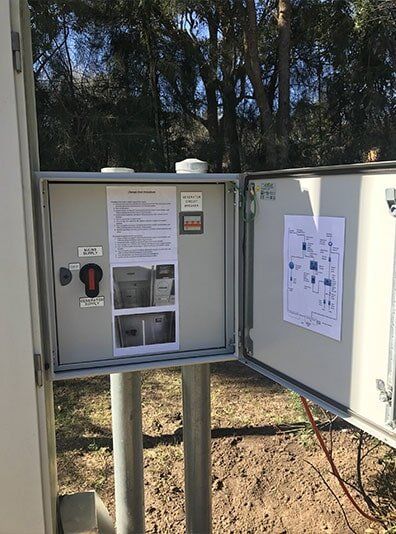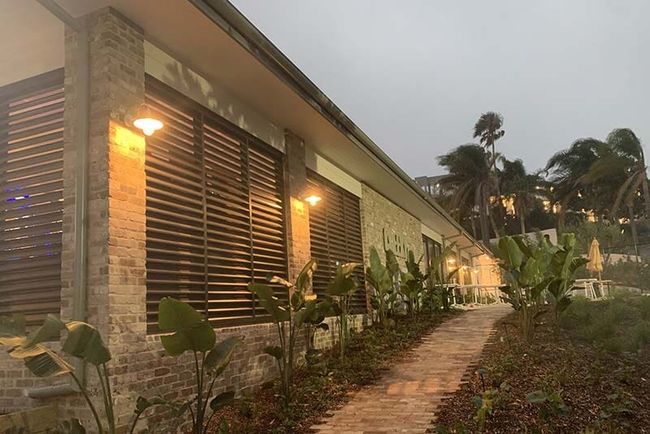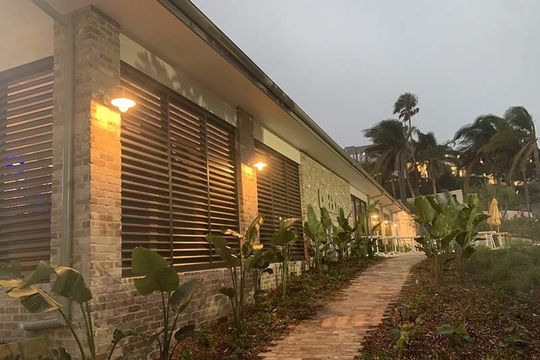Knowledge Centre In Port Stephens
Power Board Safety
Many homes now are linked or powered by a lot of devices. Whether that be from devices people use within the home or from the many appliances used for day to day living. Houses now days are using more power than ever, so it pays to know what steps you can take to keep your devices and home safe.
According to the Australian Bureau of Statistics, the number of households with access to the internet increased to 7.7 million in 2014-15, representing 86% of all households. This was an increase of 83% from 2012-13 and with appliances such as televisions, fridges and computers taking center stage in internet connectivity and what does the internet use? Power. It’s hard to believe that we don’t think about the need to protect our homes against fires caused by overloading the power points.
A basic setup of a lounge room includes a television, digital set top box (if it’s not already in your TV set) and a DVD player. That’s three power cords and that’s not including TV streaming devices, sound systems or gaming consoles. Most homes about 25 years old will generally only have one power point per room within a standard home. So, what are you going to do? “Don’t worry!” I hear you say. “I’ll just head to Bunnings and get a power board and plug that thing up, piece of cake.” Well yes…and no.
Loading up your power board is fine, keeping that you remember a few golden rules:
- Only put appliances with a low wattage in the power board. Phone chargers, lamps and landline phones. Appliances higher in wattage, e.g. heaters, kettles and microwaves should be plugged into its own power point.
- Never use a double adapter/extension and a power board together. This is called “piggy backing” and can cause the power boards to overload and damage the appliances plugged in or cause a fire.
- Always check the board for any signs of damage. Damage = risk of safety.
- Only use power boards with an “overload” feature and built- in safety switches/circuit breakers.
- Check to ensure there is adequate ventilation around the power board. If you’re finding that you are always using power boards and extension leads it may be a thought to review the rooms and hire a qualified electrician to install additional power points. It may cost a bit at the start but so does replacing everything in your home when it burns down as a result of overloading a $3 item from Bunnings.
Fun Facts About Electricity
- Electricity travels at the speed of light—more than 186,000 miles per second.
- Electricity comes from power stations, the wind, the sun, water and seriously, even animal poop.
- Iceland is the only country whose electricity supply comes entirely from renewable sources.
- Electricity plays a role in the way your heart beats. Muscle cells in the heart are contracted by electricity going through the heart. Electrocardiogram (ECG) machines used in hospitals measure the electricity going through someone’s heart, when the person is healthy it usually shows a line moving across a screen with regular spikes as the heart beats.
- Ever wondered why birds that sit on power lines don’t get electrocuted? If a bird sits on only one power line, it’s safe. If the bird touches any part of its body to another line, it creates a circuit, causing electrocution.
- A spark of static electricity can measure up to 3,000 volts. A bolt of lightning can measure up to 3,000,000 volts and it lasts less than one second.
- When an electric charge builds up on the surface of an object it makes static electricity. You might have got a small electric shock, which is static electricity. This happens when an electric charge is quickly cancelled out by an opposite charge.
- What’s the world’s biggest source of energy? Well it actually comes from burning coal. Coal is burnt in furnaces which heats the water until it becomes steam. This then spins turbines which are attached to generators.
Escape Plans—Are You Ready When A Fire Strikes?
Having a fire plan is such an important way you can protect your home and assets. By establishing and understanding a fire plan, you can be prepared to save your life and those around you. It’s super simple!
UNDERSTAND YOUR SURROUNDINGS
It can be good to get an idea of where your windows and exits are and what it will take to exit them. A single story home may be vastly different to a multi-story complex. Take a walkthrough of your home, evaluating your exits and be mindful of any obstructions that may be a problem in the event of an emergency.
DRAW YOUR ESCAPE PLAN
This is especially helpful if you have children in your home. In the event of an emergency, sometimes even the smallest of common sense can leave your body so having a picture can be a really great referencing tool when you haven’t got the time to think. Make sure you mark where the exits are and ensure that people avoid common places for fire. There is no point drawing your escape plan to exit the kitchen window when the fire is in the kitchen.
Identify a common meeting place for everybody to escape to. This location must be at a safe distance from the house and easily identifiable. For example, a light post across from street or a neighbouring property.
CLOSE YOUR DOORS
It takes minutes if not seconds for a small fire to spread. Ensure that you close doors behind you to restrict the fires access to remaining parts of your home is an easy way to buy yourself time to escape.
If you need to barricade yourself within a room as escaping via the main exits/doorways is too dangerous, block all vents and doors where smoke can enter and notify the authorities where you are. It can also be helpful to wave a flashlight or something identifying out the window to help them locate you.
TRIAL THE ESCAPE PLAN
It is paramount for everyone to understand and have access to the evacuation plan. You can do this by simulating a fire scenario and physically going through what happens if a fire starts and how to get out safely. This is a great way to visualise your map. By trialling the escape plan, you also can get an idea for any possible obstructions or hazards before an event does strike.
If you have children within the home, it can be a good idea to assign an adult to alert and help get the child to safety, instead of frantically racing around trying to look for people who may already be safe outside.
Second story homes need to also be equipped with escape equipment. Ensure you have a method that is safe for everybody to use, such as storing rope ladders near windows and clearly marking on your plan where they are located.
DOES EVERYONE KNOW WHAT THE EMERGENCY NUMBER IS?
Children should know the emergency number. If something happens to the grown up, it will be of significant benefit for everyone for them to learn who to call if an emergency happens. In Australia, the emergency number is 000.
ARE YOUR SMOKE ALARMS UP TO DATE AND IN GOOD WORKING ORDER?
Smoke alarms are an effective tool in fire safety and legally have to be installed in new homes. If you do not have a working smoke alarm within your home, you are putting yourself and others at risk!
Batteries should be replaced every year and smoke alarms need to be positioned correctly within the home in order for the alarm to be effective. The new photoelectric smoke alarms sense the tiniest bit of debris as they are designed to pick up smouldering fire and dense smoke.
Legally smoke alarms need to be placed outside every bedroom and within the hallway. New builds or substantially renovated homes/units will require the installation of photoelectric, hardwired interconnected smoke alarms as of the 1st of January 2017. It is always a good idea to book CEASSA in for an assessment of your home to ensure that it meets the regulations for both positioning and functionality. If ever you are unsure, speak to the experts.
IF YOU ARE OUT, STAY OUT!
Under no circumstance should you re-enter a burning home. Let the authorities know how many people/pets need assistance as you may not make it back out. If you have a well thought out and exercised evacuation plan, the chances for survival are increased.







